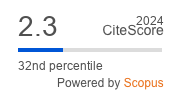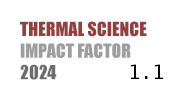ABSTRACT
The paper introduces the Explainable AI methodology to assess the global feature importance of the Machine Learning models used for heat demand forecasting in intelligent control of District Heating Systems (DHS), with motivation to facilitate their interpretability and trustworthiness, hence addressin g the challenges related to adherence to communal standards, customer satisfaction and liability risks. Methodology involves generation of global feature importance insights by using four different approaches, namely intrinsic (ante-hoc) interpretability of Gradient Boosting method and selected post-hoc methods, namely Partial Dependence, Accumulated Local Effects (ALE) and SHAP and qualitative analysis of those insights in context of expected behavior of DHS and comparative analysis. None of the selected methods assume feature permutation or perturbations which can introduce bias due to introduction of random unrealistic values of data instances. ALE and SHAP have been found as most reliable methods for determining the feature importance, taking into account feature interactions and nonlinearities. ALE plots with transmitted energy across the range of ambient temperatures closely resemble the shape of the control curve, which is the evidence of accurate model, as well as suitability of explanation method. By providing the insights which align with the domain expertise, the discussion confirms the value of using Explainable AI stack as mandatory layer in assessing the performance of ML models, especially in high-risk AI systems, such as those whose use is anticipated in the DHS.
KEYWORDS
PAPER SUBMITTED: 2024-12-23
PAPER REVISED: 2025-01-23
PAPER ACCEPTED: 2025-01-30
PUBLISHED ONLINE: 2025-04-05
- Zdravković, M., Ćirić, I., Ignjatović, M., Explainable Heat Demand Forecasting for the Novel Control Strategies of District Heating Systems, Annual Reviews in Control, 53 (2022) pp. 405-418
- Runge, J., Etienne S., A Comparison of Prediction and Forecasting Artificial Intelligence Models to Estimate the Future Energy Demand in a District Heating System, Energy, 269 (2023):126661
- Wei, Z., Tingwei Z., Bao Y., Yunxiao D., Ran X., Ruzhu W., Xiaoqiang Z., Prediction of Residential District Heating Load Based on Machine Learning: A Case Study, Energy, 231(2021):120950
- Hochreiter, S., Schmidhuber, J., Long Short-Term Memory, Neural Computation, 9 (1997) 1735-1780
- Gong, M., Yin B., Juan Q., Jin W., Peng Y., Sheng W., Gradient Boosting Machine for Predicting Return Temperature of District Heating System: A Case Study for Residential Buildings in Tianjin. Journal of Building Engineering, 27 (2020):100950
- Zdravković, M. (2024). XGBoost "is All You Need": the Case of Forecasting Transmitted Heat Energy in District Heating Systems. In: Trajanović, M., Filipović, N., Zdravković, M. (eds) Disruptive Information Technologies for a Smart Society. ICIST 2024. Lecture Notes in Networks and Systems, vol 860. Springer, Cham
- Ribeiro, M. T., Singh, S., Guestrin, C., Why Should I Trust You?: Explaining the Predictions of Any Classifier. Proceedings of the 22nd ACM SIGKDD International Conference on Knowledge Discovery and Data Mining, 2016, 1135-1144
- Dang, L. M., Shin, J., Li, Y., Tightiz, L., Nguyen, T. N., Song, H.-K., & Moon, H. (2023). Toward explainable heat load patterns prediction for district heating. Scientific Reports, 13(1), 7434
- Park, S., Moon, J., Hwang, E. (2020). Explainable Anomaly Detection for District Heating Based on Shapley Additive Explanations. 2020 International Conference on Data Mining Workshops (ICDMW)
- Friedman, J. H., Greedy function approximation: A gradient boosting machine. The Annals of Statistics, 29 (2001) (5), 1189-1232
- Apley, D. W., Zhu, J. Visualizing the Effects of Predictor Variables in Black Box Supervised Learning Models (Version 2). arXiv, 2016, doi.org/10.48550/ARXIV.1612.08468
- Lundberg, S., Lee, S.-I., A Unified Approach to Interpreting Model Predictions. arXiv. 2017, arxiv.org/abs/1705.07874
- Fisher, A., Rudin, C., Dominici, F., All Models are Wrong, but Many are Useful: Learning a Variable's Importance by Studying an Entire Class of Prediction Models Simultaneously, arXiv, 2018, doi.org/10.48550/ARXIV.1801.01489
- Huang, Y., Zhao, Y., Wang, Z., Liu, X., Liu, H., & Fu, Y. (2023). Explainable district heat load forecasting with active deep learning. Applied Energy, 350, 121753. doi.org/10.1016/j.apenergy.2023.121753

